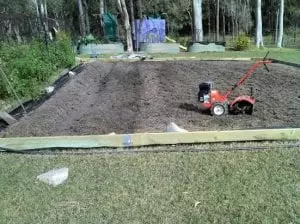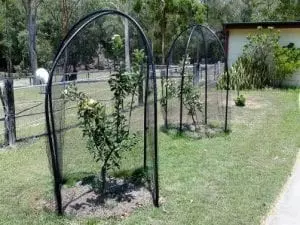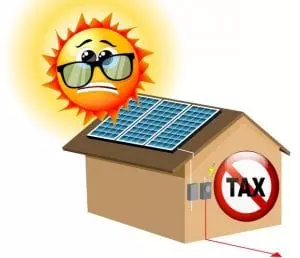The well-known catchphrase ‘beautiful one day, perfect the next’ was devised by advertisers to describe Queensland summer…but I don’t think they had gardening in mind when they coined it.
Summer in subtropical south-east Queensland has 3 keywords: hot, humid, and rainy. This is a time where the gentle breezes and pleasant sunshine of spring have gone, & given way to blistering sun, tropical thunderstorms, & a desperation for air-conditioning. This is the season that teaches you what ‘humid subtropical’ really means; and if you’re new to gardening here, it can be a harsh introduction.
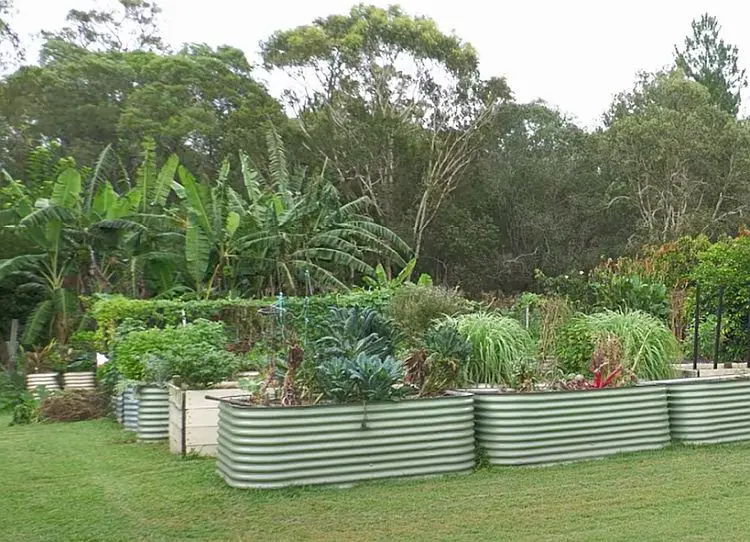
Summer in the Garden
Plants that thrive in the temperate conditions of spring may fry under the intense summer sun. Pests & bugs appear in their thousands. And the danger of losing a slew of edibles &/or fruit trees all at once from heavy rainfall or flooding is a real one. While these factors may vary in their intensity from year to year, we can always be sure that summer is our toughest season in the garden.
The traditional 3-month season durations don’t really apply in south-east Queensland. Summer may last a good 6 months here, sometimes longer in a really hot year. The accompanying rainfall can be truly tropical in nature: intense, sudden, laden with hail, and unpredictable. Days aren’t significantly longer than in winter, but it gets very hot very early in the day (i.e. before 8am), and the humidity can feel like being wrapped in a wet woollen blanket.


Now all this sounds a bit negative, but it really isn’t. Successful vegetable gardening in any climate comes from good preparation and understanding your growing environment. So making the most of summer gardening in the subtropics is just about knowing what you’re dealing with.
Summer gardening can provide truly wonderful results, as long as you’ve prepared your soil, planted suitable crops and are aware of potential pest issues.
While the weather has been milder & wetter than usual so far in 2022, September sees temperatures climb. Destructive pests like fruit fly & cabbage white butterfly suddenly reappear, ready to wreak havoc. Crops like lettuce, large tomatoes, cucumbers, cabbage and beans start to suffer in this weather. Some years, mid-September sees a ‘hot blast’, where we get a week or two of full summer heat & humidity, often without rain, which can cook tender young seedlings before they have a chance to get established.


Special Climate Notes for 2022/23
The weather for summer 2022-23 promises to be a bit different. All predictions point to a much cooler and wetter summer than usual, which we have already seen to be true so far. In terms of gardening, this means you should pay particular attention to drainage, especially if you have garden beds and fruit trees at ground level.
Cyclones, storm activity and heatwaves are predicted to be at normal levels, so it doesn’t mean we are off the hook for any of those either. Make sure you have adequate trellising and supports in place for heavier plants, vines and trees. Have water managements systems in place before storms hit, not after. Early summer is also snake season, so don’t have piles of debris or garden waste sitting around because this is where they like to hide.
Have a look at your overall garden plan and consider positioning. Some plants or potted trees may need moving when the season changes. Make sure that any tropical, sun-loving plants can make the most of the heat, and that any ‘part-shade’ lovers won’t be too wet or shaded.
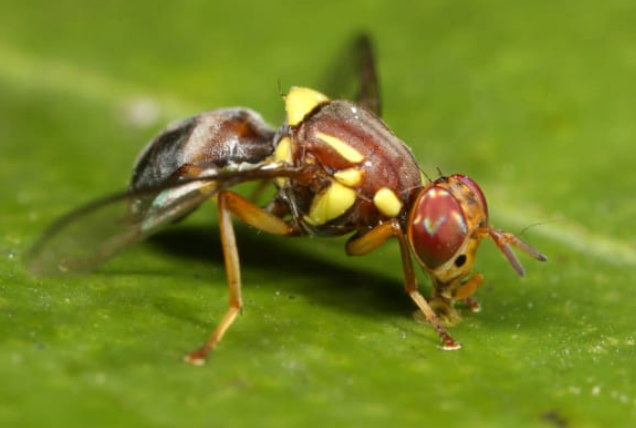
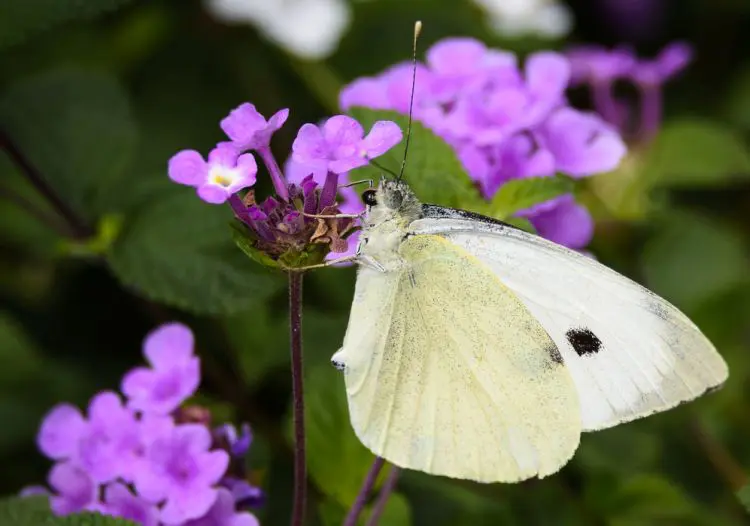
Summer Garden Tasks
Pest protection is a priority throughout summer. There’s no point going to all the effort of growing food if the pests get to it before you do! Net, bag or cover anything susceptible as soon as you see fruit forming. Read up on Queensland fruit fly and cabbage white butterflies so you know what you’re looking for (these are the 2 most common pests but of course there are lots more).
Covering some crops or fruit trees (young avocadoes, for example) with shade cloth can be necessary in summer, to protect them from the harsh sun. Make sure that they’re not covered so closely that air circulation is reduced, or they can develop fungal diseases. Mulching is important too, as it helps retain moisture in the soil, so top up or refresh the mulch on any beds that need it.

Finish harvesting potatoes, onions, garlic and any other winter/spring crops before the extra rain and humidity begins to rot them in the ground. Root crops with thin skins and a subtropical summer will never be friends! Make sure fruit trees have been fertilised by the end of spring. This is so that the fertiliser has a chance to penetrate the soil & get absorbed before the big storms hit & wash it away.
The end of spring is your last chance to prune summer cropping plants and trees like mangoes, avocadoes, bananas, nashi pears & lychees. Such pruning should ideally be done before they start flowering. You can prune in summer, but not too harshly as it can stress the trees out.
When Should I Start Planting?
This can be a really difficult question to answer! We all know the weather can change from year to year and the QLD season changes can be subtle. Pay close attention to daily minimum temperatures and general weather conditions so you can get your seed sown at the right time. Check the required germination temperature for each seed, as some of them can be fussy.
What Should I Plant?
Summer in the subtropics of QLD is a time to think outside the box and move away from the traditional crops. This is because the intense heat and humidity we experience throughout our long summer is too much for European veggies which grow best in our spring climate.
Generally, temperate-loving crops like cucumber, capsicum, all types of melons, chokoes, and zucchini do best in our spring. If you want to grow these, know that they need soil warmth to develop strong seedlings that will fruit well-this is really quite important– so you might need to use a mini greenhouse to get the seed start early enough to get a decent crop in before the pests, strong sun & humidity set in for summer. With this 2022-23 season being cooler, you might be able to grow these somewhat troublesome veggies for a bit longer this year.
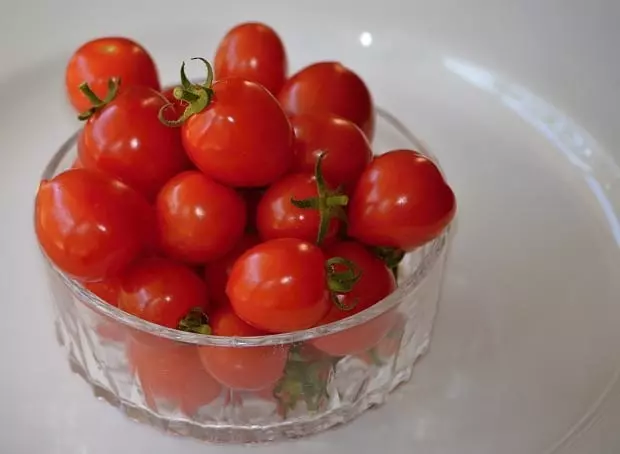
Cherry tomatoes will grow in spring and will usually go right through summer too. A plain orange type will do best, as other colours have thinner skins which are prone to fruit fly attack. Growing tomatoes in pots is a good idea during the warmer months. Not only do you save on space, but as we go into summer, you can move them out of the strong sun and rain so as to maintain the best possible growing conditions. As with potatoes, the key to a good tomato crop is moderate sun and consistent watering, and growing tomatoes in pots is the best way to control these elements.

You’ll have the most success with tropical, heat-tolerant crops during summer. Edibles that do well in summer include rosella, gourds, snake beans, tromboncino, kang kong, Jerusalem artichoke, sweet potato, taro, arrowhead, water chestnuts, Egyptian spinach, okra, corn, malabar spinach, ginger, galangal, perpetual gator spinach, eggplant and radishes. Remember that sometimes it’s not just the vegetable but the variety of it that’s important. Some pumpkins can be grown, but choose your variety carefully: kent & similar types do best.
Now go go get into it!!




